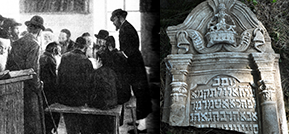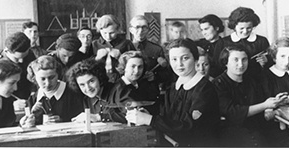About 2,200 tombstones from the Jewish cemetery in Kuty are available now on our site
The best known of these was the rabbi of the city and a famous kabbalist, R. Moshe ben Menachem Mendel Kitever, who headed a group of kabbalists during the first half of the 18th century (the tombstone on the grave of this prominent scholar and his wife Sara Sosye is still towering at the North-East section of the cemetery among impressive tombstones of his contemporaries: see here).
No less famous was the name of his most notable student, R. Abraham Gershon of Kuty, a kabbalist and scholar and the brother-in-law of the Ba’al Shem Tov. According to Hassidic tradition, the Ba’al Shem Tov spent the years of his “hiding” close to Kuty as well, where he supported himself by digging up and selling clay.
It is difficult, nowadays, to find traces in Kuty of the well-developed Jewish community which existed there for over 200 years. The old Jewish cemetery, however, still stands. Parts of it were destroyed and some of the headstones were used for the construction of a Lenin monument in the city and for other construction purposes, but it still offers a most important testimony to the lives of the Jews of Galicia during the 18th-20th centuries.
The members of our expedition to Kuty discovered, documented and photographed around 2,200 tombstones – all of the tombstones which were available without extensive digging on the grounds of the cemetery. The artistic variegation of these tombstones, the many folkloristic and heraldic elements and the impressive quality of stone carving on many of them make the Jewish cemetery of Kuty a heritage site of first importance.
Photographs of all the survived headstones deciphered and transcribed by the members of our expedition and a detailed topographic sketch of the cemetery are available on the JGB Organization’s website: see here
You may see also most impressive examples of the old tombstones from Kuty cemetery in our gallery Masterpieces of Jewish Stone Carving






